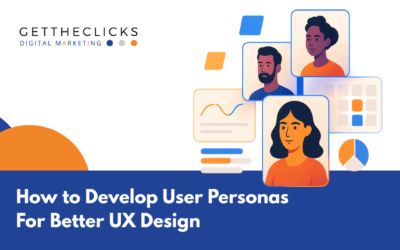The Americans with Disabilities Act (ADA) requires that certain businesses accommodate individuals with disabilities. This includes websites. Websites must be accessible to blind users, deaf users, and people who can only use assistive technologies to navigate.
As many of us work and learn from home, it’s become glaringly obvious that many websites lack the ADA compliance that they need, damaging their customer base and leading to lawsuits.
Get your website ready for all types of users with this practical guide that will ensure all of your users feel included—and that your brand reputation stays intact.
What is ADA Compliance?
To put it simply, ADA compliance and refers to meeting the standards set by the Americans with Disabilities Act. Websites are meant to provide the same type of public accommodation that you would expect in any other public area, which also includes not only websites, but apps, smartphones, and any other way that your content can be accessed.
Failure to Meet Standards
Let’s say that you haven’t caught all of the ADA violations, or that you haven’t done the work to make your site ADA compliant. It’s really not worth it not to make these changes, not when you risk lawsuits and fines.
First-time violations can cost you anywhere from $55,000-$75,000, and if you repeat the violation, that can come with a $150,000 fine. You can’t afford to not be ADA compliant, and not just because of the money.
People want to know that your company cares about being inclusive, and is committed to serving people with disabilities. It will impact people’s opinion of your brand and their future decisions about buying from you if they find that your company is not taking ADA compliance and public accommodation seriously.
Who Needs Accessibility?
There are many people who need more inclusive designs—millions of them. Blind or deaf people will benefit from magnification, brightness settings, transcriptions, and captions, while easier web page layouts will help people with learning disabilities navigate more comfortably.
Don’t forget the fact that odd page layouts can make it difficult for people with behavioral or anxiety issues to look through your information, and that not everyone uses a mouse or a trackpad. This is why you need different forms of access for many users and screen readers.
Do I Really Need to Change My Website?
When in doubt, the answer is usually yes. Just in 2018, there have been more than 2000 website accessibility lawsuits filed for websites that do not have compliance with ADA guidelines.
Perhaps you’ve done some automated check on whether you have achieved ADA website compliance. Automated checks often don’t catch everything, and the best way to see whether a site is ADA compliant is to test it out yourself.
Ultimately, testing your website for ADA compliance and putting in the effort to change it might feel like a lot of work, but it’s all worth it when you think about how many more people will be able to interact with your website and product.
Private Employers and Small Companies
You might think “I only have a couple of employees” or “I’m a private employer” and wonder if you really need to go through all the trouble to change up your website content. Yes, you still need an ADA compliant website in order to enhance the user experience for everyone.
There are a few cases in which private employers with less than 10 employees don’t necessarily need to go out on all the compliance, but ADA website compliance isn’t just about guidelines; it’s about people who need access to your content, and about expanding your following with more people who feel like you’ve taken them into account.
Points of Accessibility
If you’re wondering where to begin, think about your content first. Consider how you navigate through your website and what content you’re looking at. This includes PDFs, any forms that must be signed, the images that you have, videos, text layouts, and even the structure of your pages.
Taking a look at the Web Content Accessibility Guidelines can help you figure out everything you need to transform your website.
What Does ADA Website Compliance Mean?
When you’re thinking about ADA compliance in daily life, it means having equal access to public spaces, and since the idea of public space is now being applied to websites, it means having equal access to your website too. This is great for you too, since you’ll get more traffic coming in to look at your content.
Web Content Accessibility Guidelines
Generally, your website should conform to the WCAG, which are guidelines rather than laws but exist to help make websites usable for everyone.
Looking at these guidelines is the best place to start. There are 38 of these guidelines though, and you don’t need to fulfill all of them to still have an accessible website. Start by dividing these guidelines and taking the biggest obstacles to accessibility—which are the most common lawsuit complaints.
Getting Started
Before you begin making actual changes to your website, it’s important to start by evaluating your current website. Rate your own site manually, going through it to see whether you could access content with just your keyboard, or the contrast of the colors, or if you have the ability to read everything rather than listening to or watching videos.
Generally, you can think about four general categories for your website: whether it’s perceivable for all types of people, how it operates, how difficult it is to understand, how robust it is.
Take the time to plan your accessibility. Think about your website design, your content, the functionality, and how other people will navigate your content.
Common Problems and Solutions
Know first that fulfilling these problems is very flexible, and not every website needs to fulfill them in the same way. You have a lot of options for changing up your website, especially since there are no clear website accessibility guidelines.
Still, there are a few specific things that you can fix right away. First, think about alternatives to images and videos. Make sure that you have transcripts, closed captioning, and audio descriptions for anything that people watch, look at or listen to. It helps to pair images, videos, and audio with text so that users and screen readers who are visually or hearing impaired have some sort of text or audio to enhance their experience.
Next, think about the structure of your website. Use markup techniques to structure your content in an order that makes it easy to read, and add in other forms of detailed instructions that don’t only rely on sight or listening. You should have a color contrast to your website, along with audio control and the ability to resize text.
Never have any sort of strobe lights though or any images that repeatedly flash more than three times per second. These types of effects can trigger seizures.
It’s important to make your website is easy to use for all users. It needs to be possible for all content to be accessed just using the keyboard, and keyboard users shouldn’t get stuck in any part of the website. Think about how your website can work with assistive technologies like joysticks, trackballs, screen enlargers, speech synthesizers, and screen readers.
Anything that moves or scrolls on your website needs to have the ability to be stopped or hidden, and anything that flashes can’t flash more than three times.
Add a description of caption to your images and videos too, and pieces that can be read aloud. Make your website easy to read, without having odd combinations of colors that will be jarring for people with disabilities.
From here, make sure that your website is completely understandable and able to be navigated by anyone, with consistent navigation for all types of people.
These are some very common guidelines and problems and have been simplified here, but thinking about how you can add text, captions, sizing, and navigation can do a lot for your website and for all of your users.
Automated Accessibility Testing
You’ve tried to alter your website, or maybe you’re wondering if your existing website is already accessible enough. You might try to use automated accessibility testing software to help you out, but know that this type of software only located about 25 percent of issues.
It’s best to hire a specialist to audit your website for you, but if you do use some sort of automated testing, make sure that you go over all of your guidelines.
Routine Checks
Don’t forget to take time every now and again and perform routine audits of your website. You might add new content or change up your videos, and whenever you do, you need to think about how your new content is viewed by others. Whenever your website evolves, make sure that your public accommodation evolves with it so that people with disabilities can access your website without a problem.
You should also keep in mind that changes to the ADA are ongoing and that these guidelines are also being updated as more people turn to online learning and think about website accessibility. As the guidelines are updated, your site needs to be updated too.
Timeline
You might want to quickly fix up your website in a matter of days to make sure that it can work with the disabilities act ADA has set out. Think in terms of months rather than days though. When you’re trying to figure out how to make websites ADA compliant, you’ll need time to really go through all of your text, images, videos, and structure. This is the only way for you to really be sure that your site remains compliant and accessible for all people with disabilities.
Conclusion
The best web design will make sure that everyone visiting your website feels like they’re welcome and that the website is easy and simple for them to use. That’s what ADA compliance is all about, and that’s why it’s important to get started and fix up pieces of your website to make sure that all of your users can access your content at all times.





